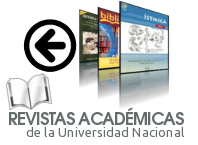The return of Religious Education to the public schools: a discussion between secularized liberals and a Romanized Bishop 1883-1892
DOI:
https://doi.org/10.15359/siwo.12-2.1Abstract
The intend of this article is to provide a more detailed insight during the process of restoring the religious education to public schools in Costa Rica after it was excluded from the educational system because of the laws issued from 1884 to 1886 that were responsible of this exclusion. But before explaining the mentioned topic, it will be given a short overview about the educational system in Costa Rica starting in the colonial period up to 1884 in order to understand not only the Catholicism´s role played during this time frame, but also the episcopal claim regarding this arbitrary exclusion in 1884. This endeavor was leaded by Mgr. Thiel, second bishop from the Costa Rican diocese, with the help of the clergy and the Catholic members they had the conviction of avoiding the secularization of the Costa Rican society (this secularization was proposed by the liberal positivists who ruled the country after 1882), Mgr. Thiel made all kind of efforts to restore the religious education to the state schools.
Keywords: religion, education, Church, State, romanization
Published
How to Cite
Issue
Section
License
Política propuesta para Revistas que ofrecen Acceso Abierto
Los autores que publican en esta revista están de acuerdo con los siguientes términos:
1. Esta revista provee acceso libre bajo licencia Creative Commons Reconocimiento-NoComercial CC BY - NC. Usted como persona autora conserva sus derechos de autor. Esta licencia permite que otros remezclen, adapten y desarrollen su trabajo sin fines comerciales, siempre y cuando le den crédito y licencien sus nuevas creaciones bajo los mismos términos
2. Los autores pueden establecer por separado acuerdos adicionales para la distribución no exclusiva de la versión de la obra publicada en la revista (por ejemplo, situarlo en un repositorio institucional o publicarlo en un libro), con un reconocimiento de su publicación inicial en esta revista.
3. Se permite y se anima a los autores a difundir sus trabajos electrónicamente (por ejemplo, en repositorios institucionales o en su propio sitio web) antes y durante el proceso de envío, ya que puede dar lugar a intercambios productivos, así como a una citación más temprana y mayor de los trabajos publicados (Véase The Effect of Open Access) (en inglés).











